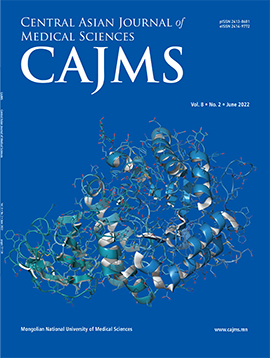Evaluation of Quality of Life and Treatment Outcome among Stroke Patients with Dysphagia
DOI:
https://doi.org/10.24079/cajms.2019.06.007Keywords:
Rehabilitation, Nerve Stimulation, Muscular Stimulation, Standardized Swallowing AssessmentAbstract
Objectives: Dysphagia occurs in 37-78% of stroke patients. We aimed to study the effect of three treatments on the quality of life of stroke patients with dysphagia. Methods: The study was a hospital-based, cross-sectional study. Participants were enrolled from the Affiliated Hospital of Inner Mongolian University for the Nationalities between July 2018 and March 2019. All patients were randomly divided into three treatment groups. One hundred forty-nine patients with post-stroke dysphagia were evaluated by Swallowing-Related Quality of Life (SWL-QOL) Scale before and after the treatment. Results: The mean age of the patients was 59.70 ± 9.55 years, with no difference between treatment groups. There was a statistically significant improvement in scores for all three treatments compared to pretreatment (p=.0001). The SWAL-QOL score was 39.25 ± 3.50 after sensory treatment combined with conventional swallowing therapy, 39.10 ± 3.54 following motor treatment combined with conventional therapy, and 42.12 ± 4.55 in neuromuscular stimulation combined with conventional therapy with latter’s scores significantly higher than the other treatments (p<.01). Conclusions: Conventional therapy combined with neuromuscular electrical simulation provided a better outcome than conventional therapy combined with nerve or muscular stimulation in stroke patients with dysphagia.
Downloads
444
Downloads
Published
How to Cite
Issue
Section
License
Copyright (c) 2019 Mongolian National University of Medical Sciences

This work is licensed under a Creative Commons Attribution-NonCommercial 4.0 International License.




